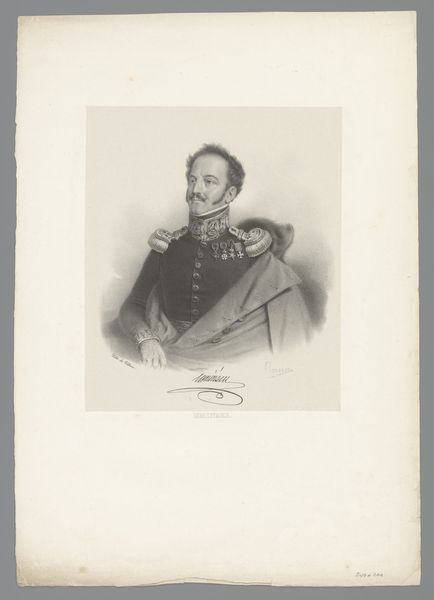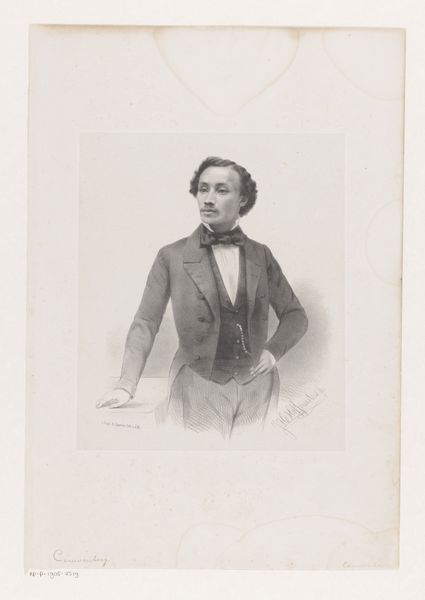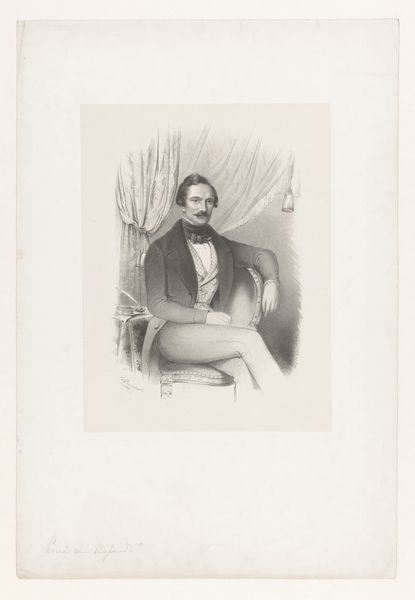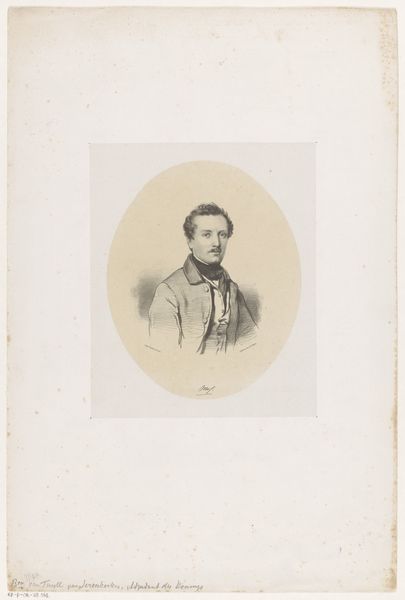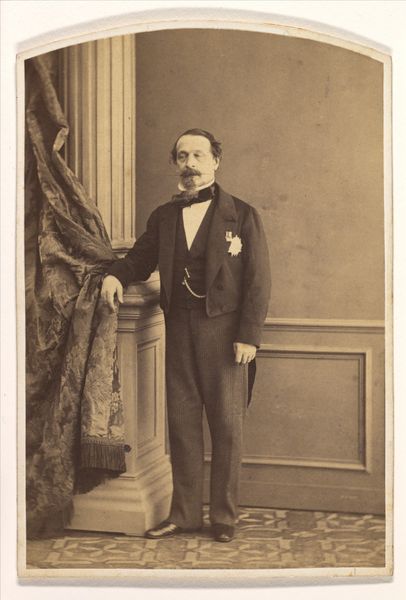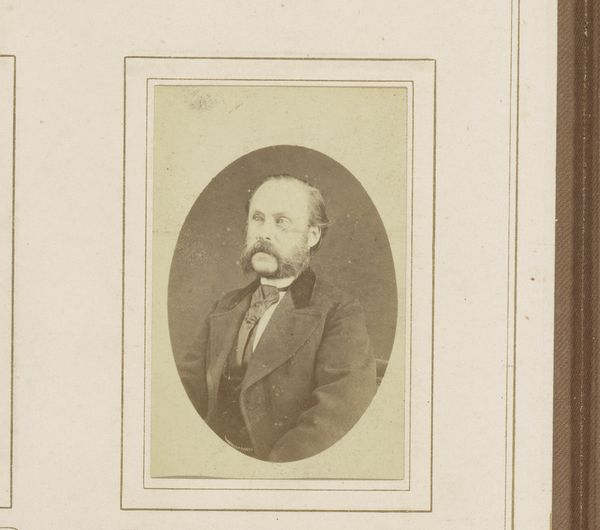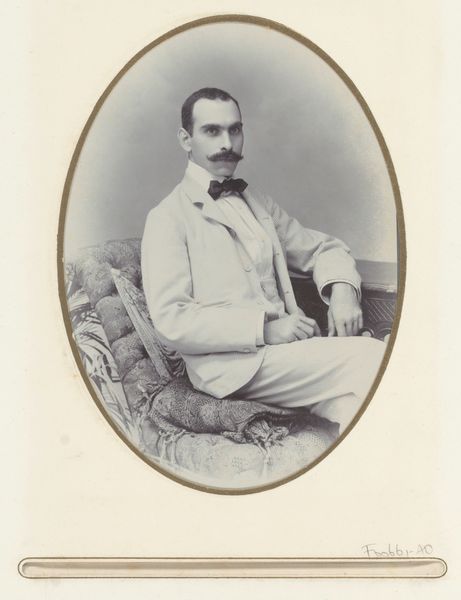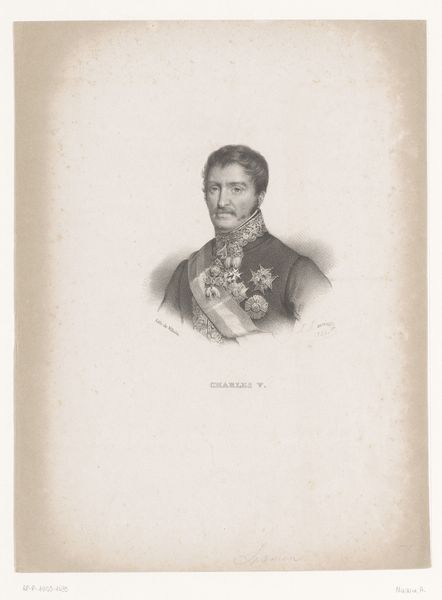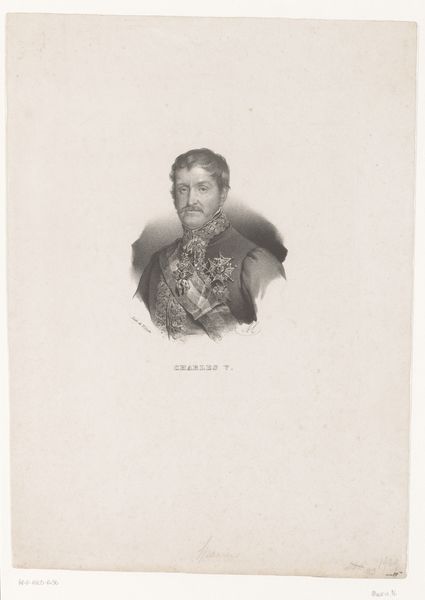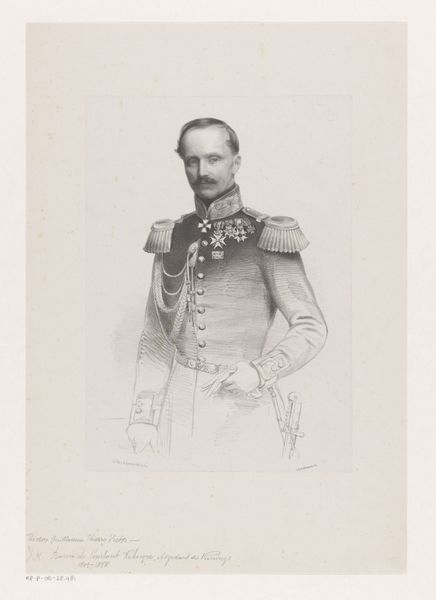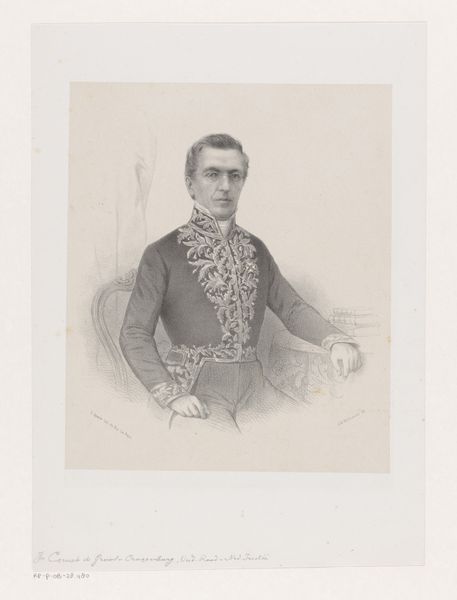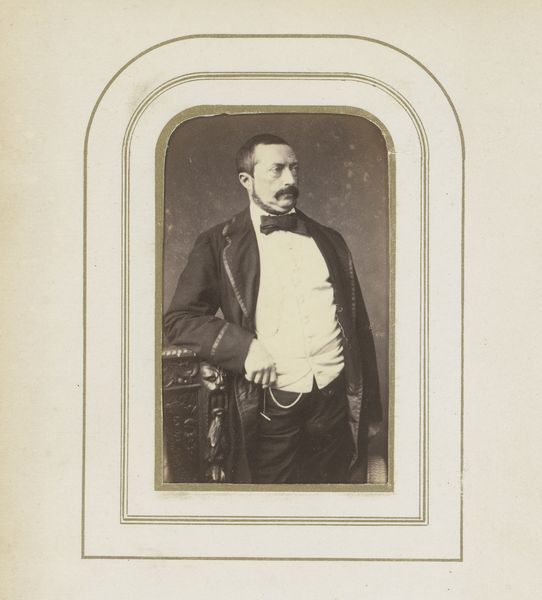
print, engraving
#
portrait
#
neoclacissism
# print
#
academic-art
#
engraving
Dimensions: height 540 mm, width 410 mm
Copyright: Rijks Museum: Open Domain
Curator: This is "Portret van André-Eugène Pirson," a Neoclassical engraving made around 1850. It’s currently held at the Rijksmuseum. Editor: The first thing that strikes me is how formal and restrained it is. There's a gravity to the presentation that feels very… deliberate. It looks so academic. Curator: The symbols certainly contribute to that feeling. Note the abundance of ornamentation, medals, and decorative finery on his uniform. Each represents something specific—honour, service, affiliation, and rank, all carefully considered and displayed. Editor: Right, it's all very controlled, almost to the point of feeling mass-produced, like he’s meant to be a cog within the ruling elite. You can practically feel the layers of societal pressure to maintain appearances, particularly the labor of production required for the intricate patterns that surround him, versus the smoothness of his white clothing, which speaks to a certain social ease. Curator: The portrait leverages specific iconographic choices to project power and prestige through that uniform and accoutrements. André-Eugène Pirson wanted to participate and represent his belonging within a specific societal strata. We may only know a small amount about the sitter, yet these many objects are very much an illustration of Pirson himself and what he valued. Editor: Absolutely. And when we think about it as an engraving, a medium that allows for multiple reproductions, this image of power becomes easily distributed, standardized even, within that specific time and place. I'm wondering, what did it cost for regular citizens of the era to obtain this engraving versus an upper-class member such as the sitter, if anything? Curator: That distribution factor highlights the very purpose of Neoclassical portraiture – to visually reinforce existing hierarchies and social roles. The consistent imagery helps to solidify those structures within the collective consciousness. I’m seeing an early method of PR—creating symbolic languages understood by society’s participants. Editor: So, beyond mere portraiture, it's an advertisement for stability within social constructs. Curator: Precisely. These emblems remind everyone involved about their relative positioning, from royalty down. They served not only as symbols for personal success but as continual reinforcement regarding their culture's values and roles. Editor: It is hard to argue the historical power and authority conveyed here through method, imagery, and overall execution. Curator: It will continue to fascinate for the messages it delivered.
Comments
No comments
Be the first to comment and join the conversation on the ultimate creative platform.
